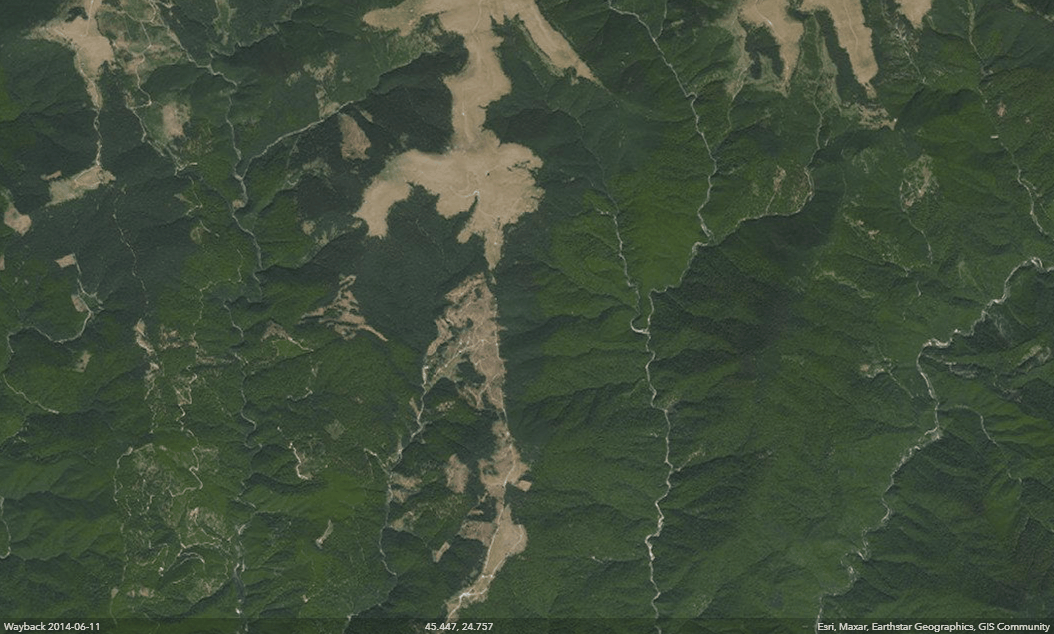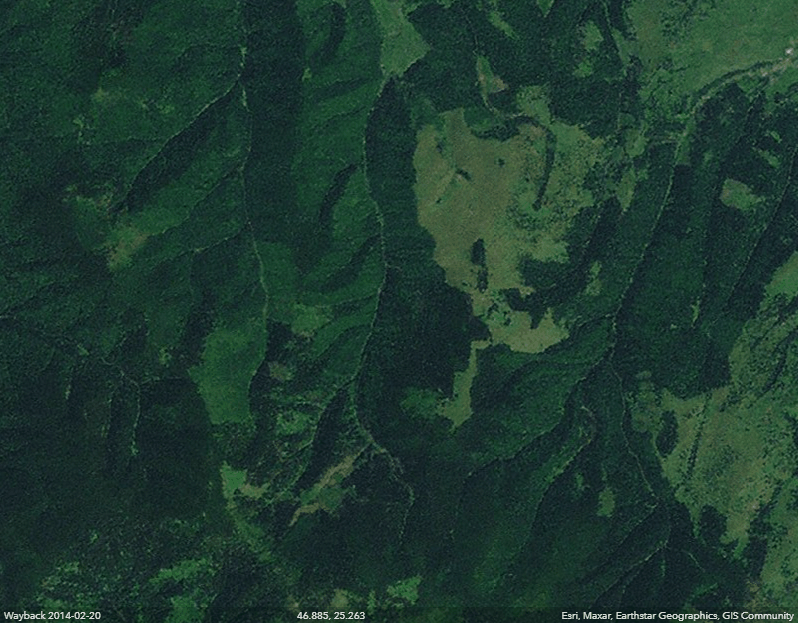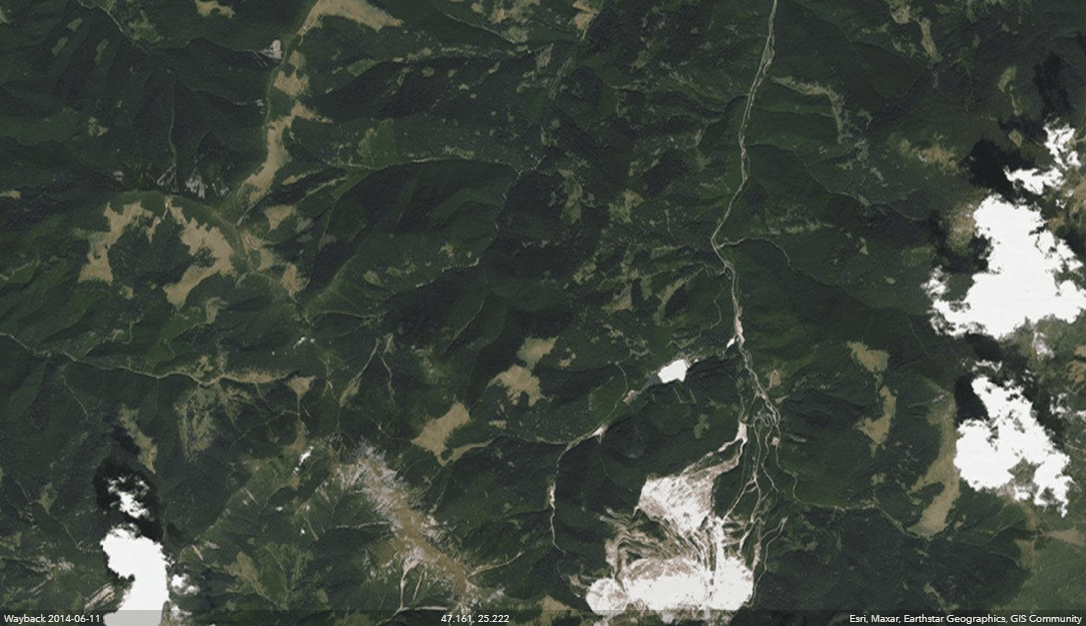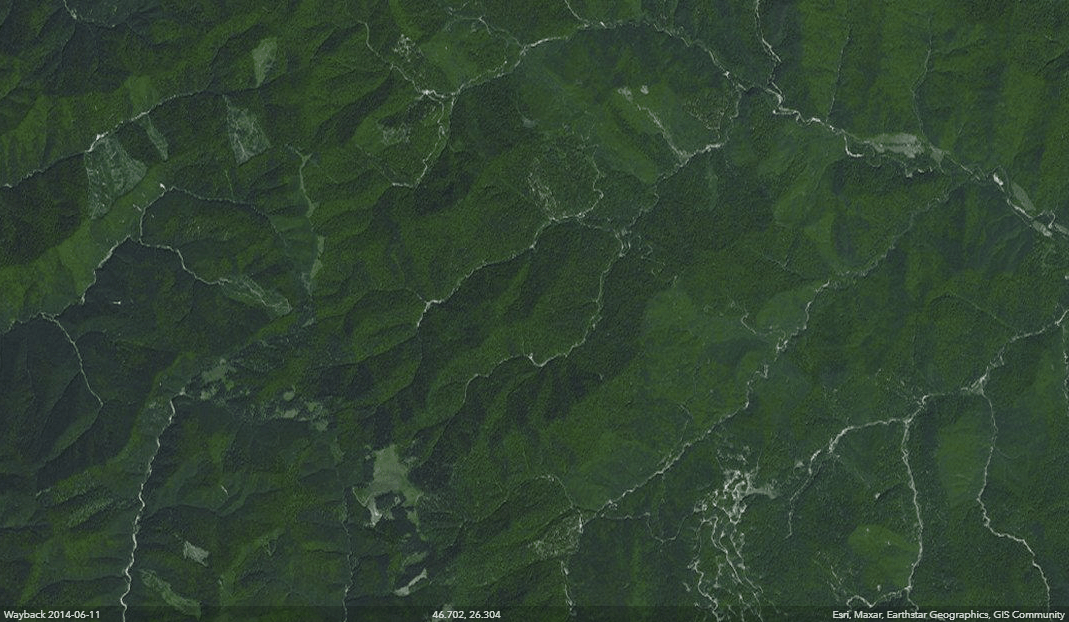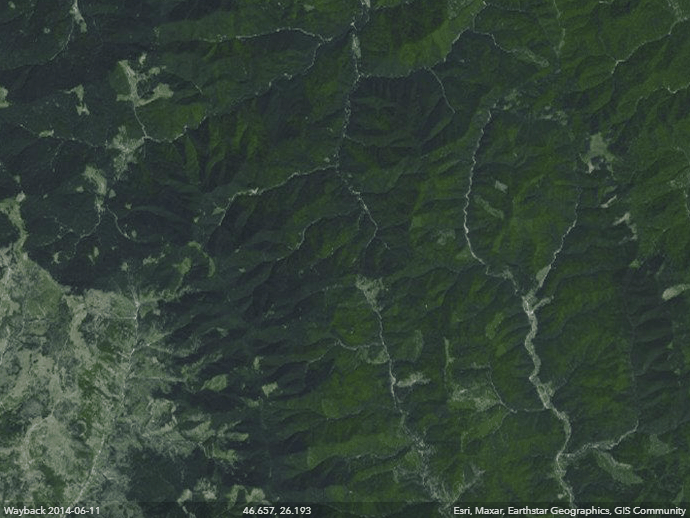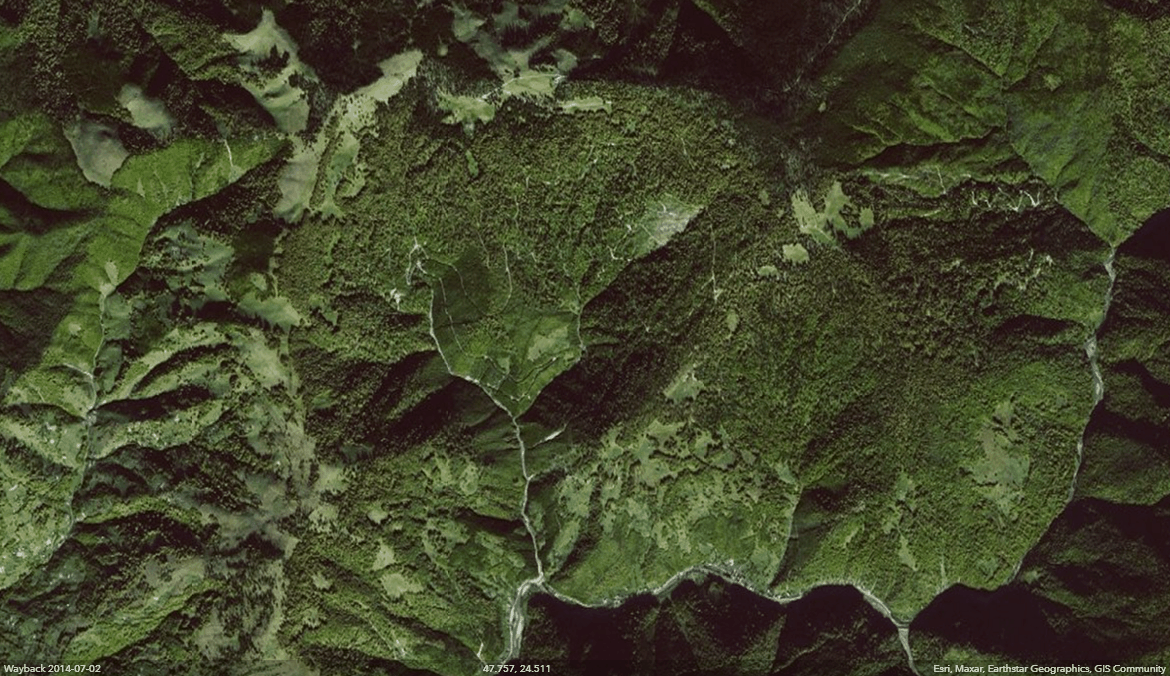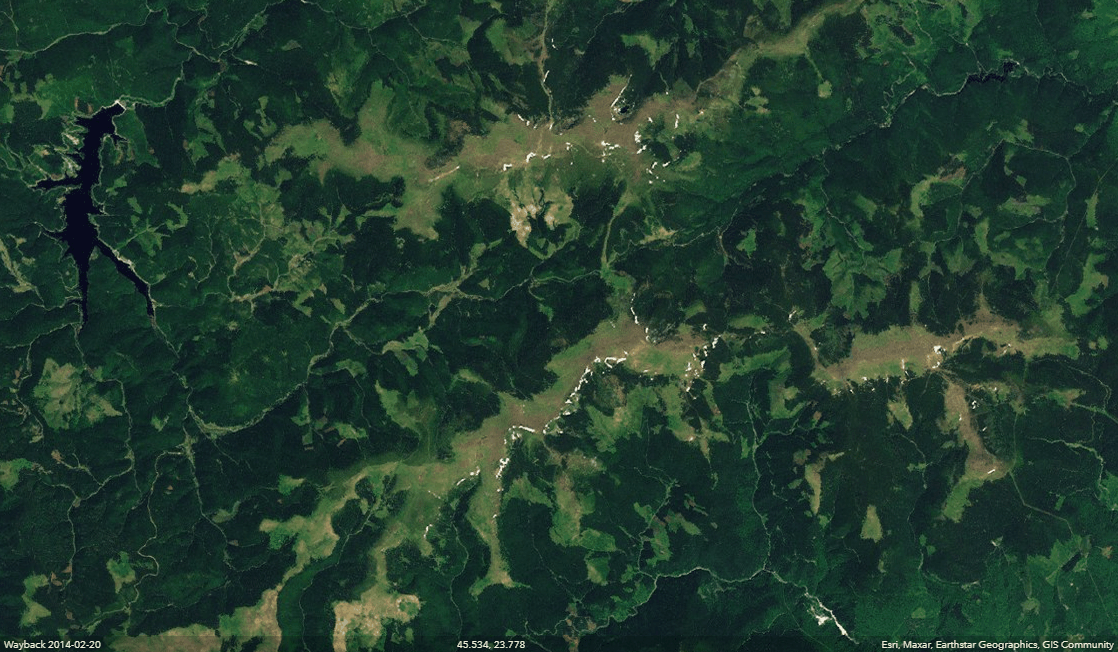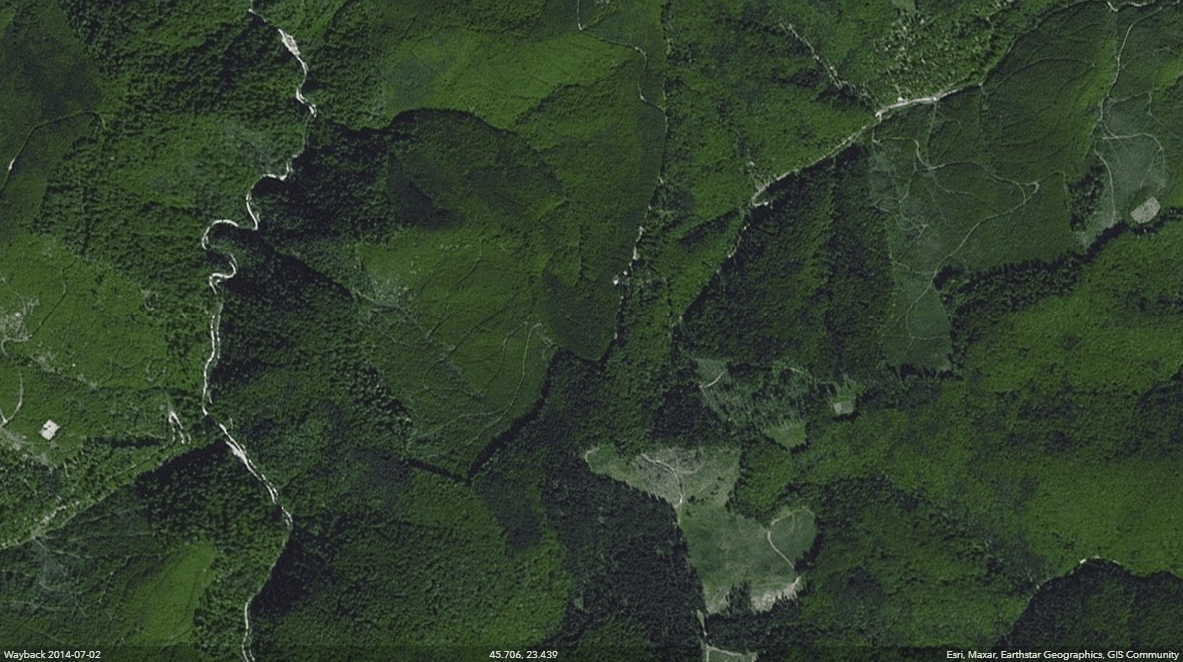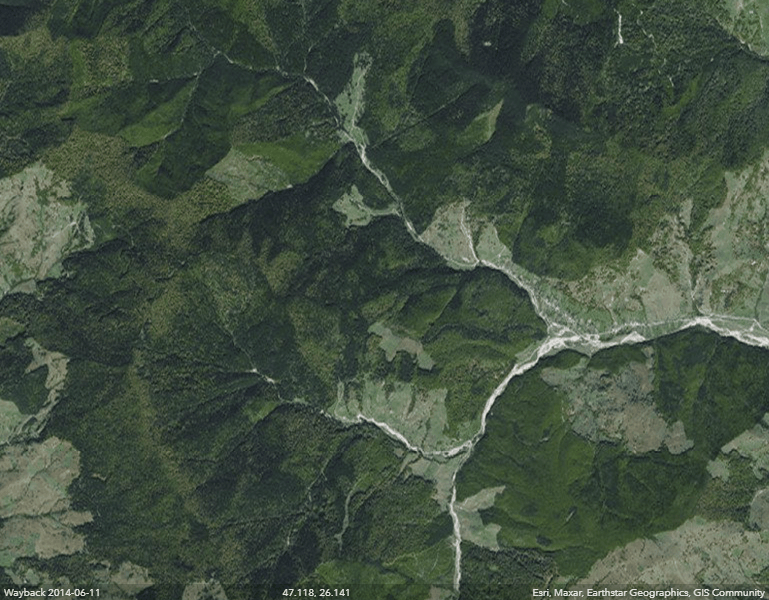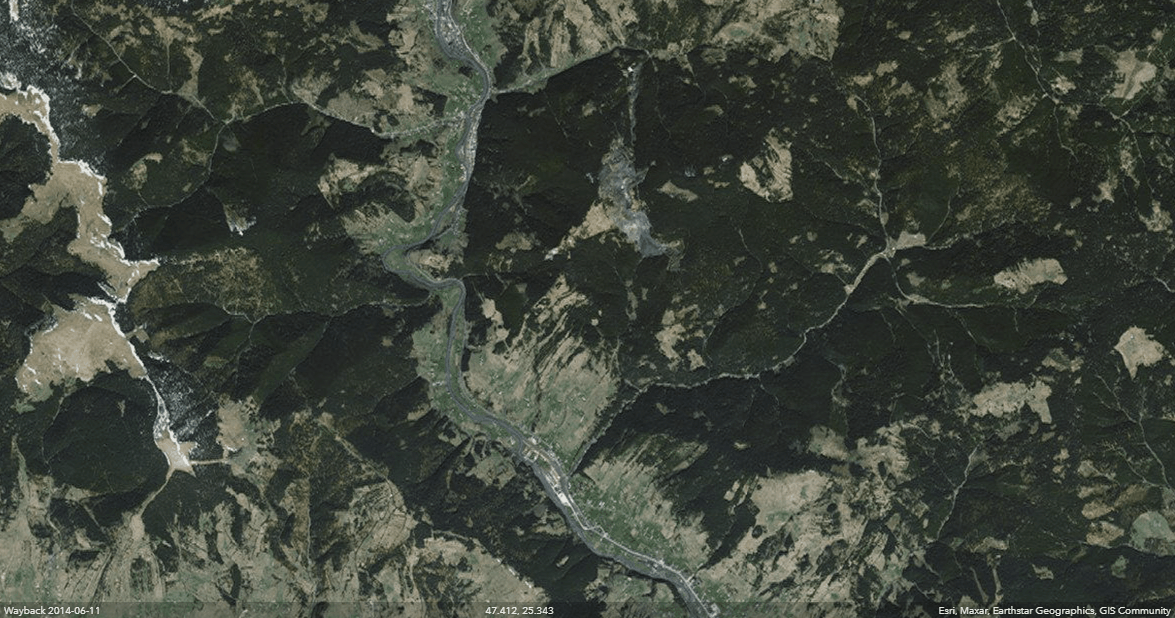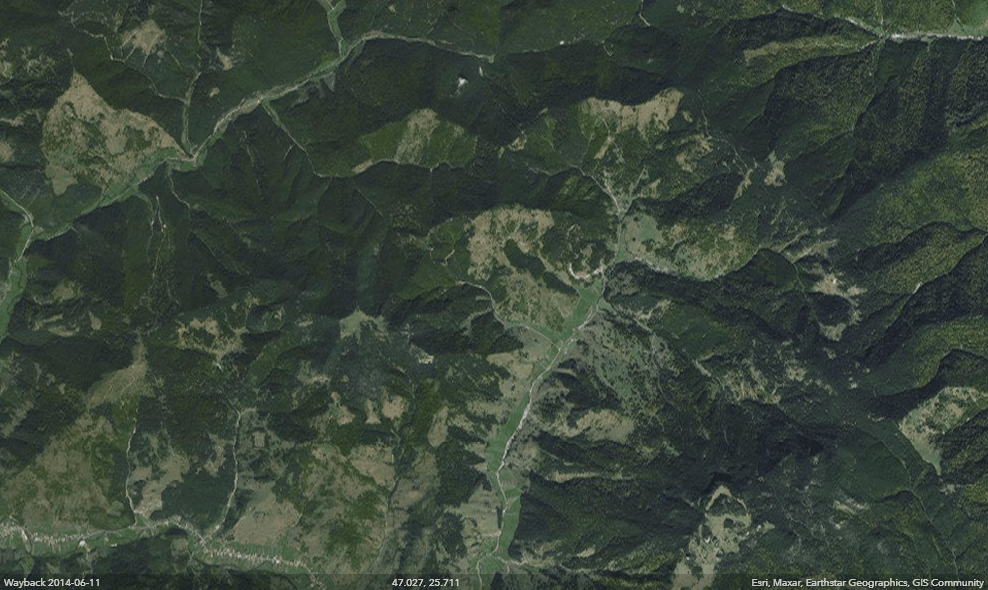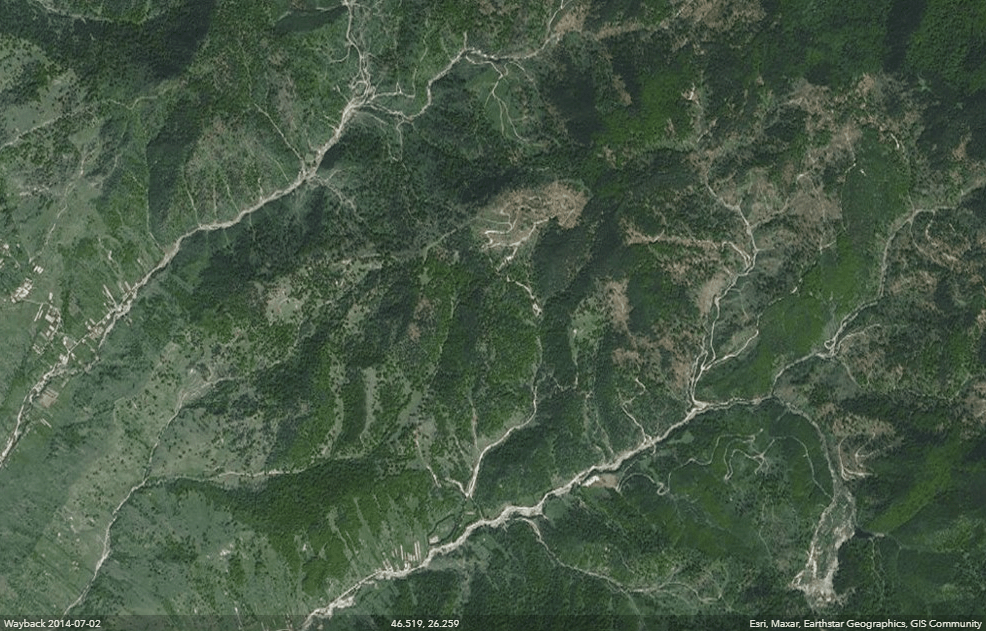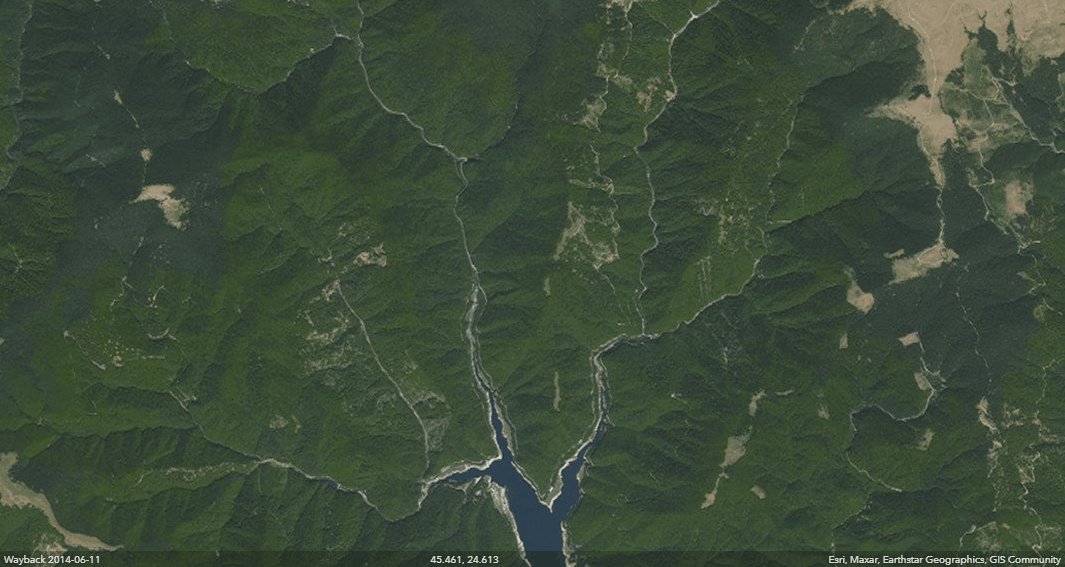Illegal logging
Numbers
~ 20 million cubic meters of illegal timber / year
~ 20 million cubic meters of illegal timber / year
Location
Romania
Romania
Publication date
27_01_2021
27_01_2021

2014 / 2019 Măguri - Răcătău (46.525, 23.028)
Summary
Romania entered into investment agreements with Austrian logging companies which are threatening with legal action if the regulation is changed. State officials have been bribed, the Romanian forestry minister was poisoned and forced out to resign. 6 journalists and foresters got killed in the past years and more than 650 incidents have been registered: including physical assaults, death threats and destruction of property. The forest keeps disappearing, the small logging companies are making small profits, Romanian State is loosing billions of euros, while the big companies and their clients make fortunes.

Largest primeval beech forest within the EU: Semenic National Park
©Matthias Schickhofer
©Matthias Schickhofer
Risks
Ecology
Threat to supply of fresh air of Europe
Destruction of European ecosystem and habitats
Extinction of whole species
Individual
Lower air quality
Victims of logging system
Loss of heritage
Social
Threat to National Security
Intrusion into social communities
Infiltration of local politics by industrial lobbies
Economic draining

2014 / 2021 Sâlhoi-Zâmbroslavele natural reservation (47.610, 25.125)
Immediate proposed actions
Supply chain transparency: logging companies as well as supplied stores (such as IKEA) need to publish in their portfolio Romania's map of old-growth forests and national reservations and overlay it with the GPS of logging locations;
Restart the public research on the state of the forest. This research was stopped after 2018 for obvious reasons. The research should be funded by the wood industry (HS Timber, Kronospan, Egger etc.) and their customers (IKEA, Hornbach, Dedeman etc.);
Monitor and support sustainable logging;
Legal reforms including the end of self-regulation by the companies: the Romanian State should do regular checks on the fields;
Protecting the officials and activists from threats;
Reform of marking and transporting system of the timber (under the GIF gallery below we transcripted three very simple solutions).
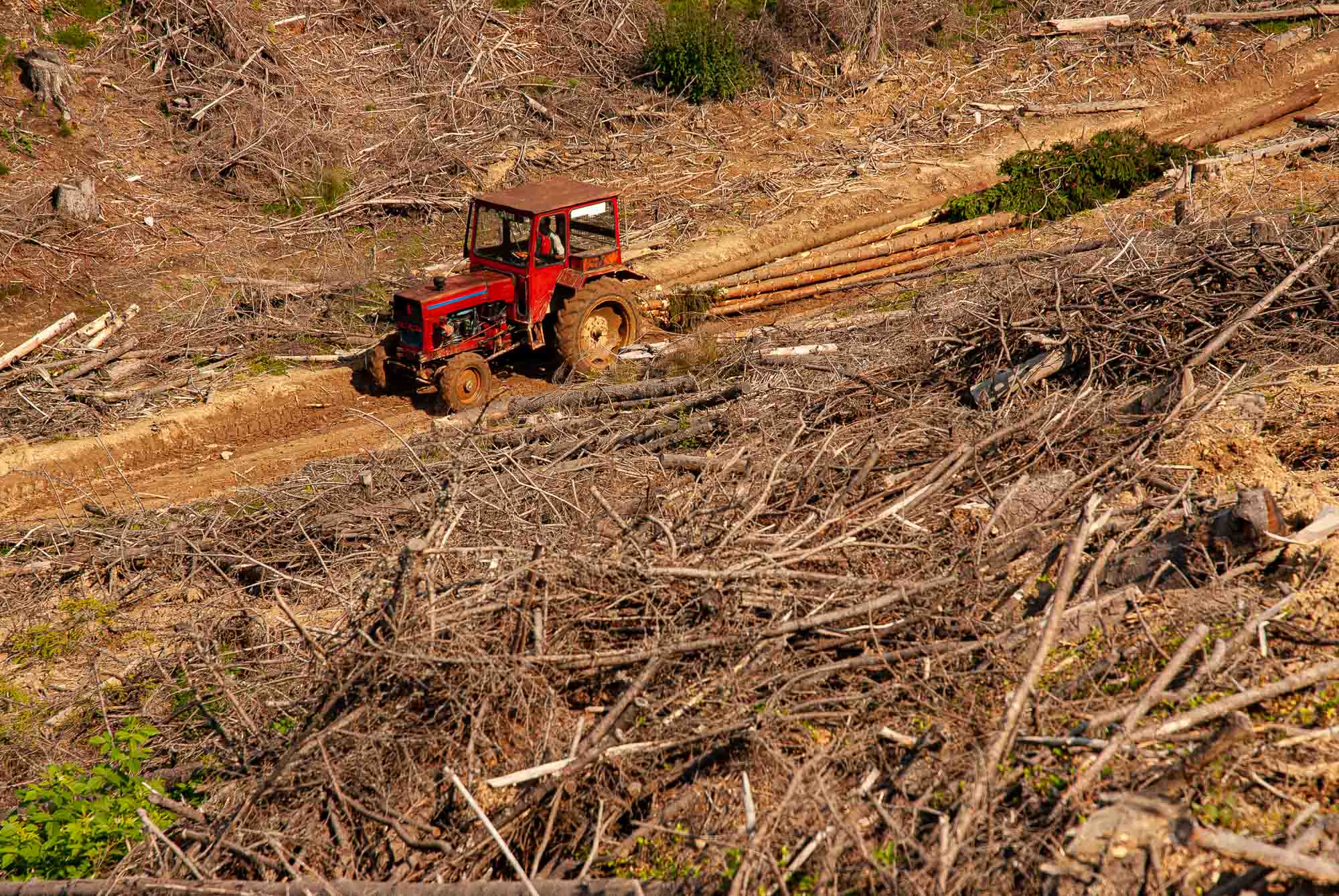
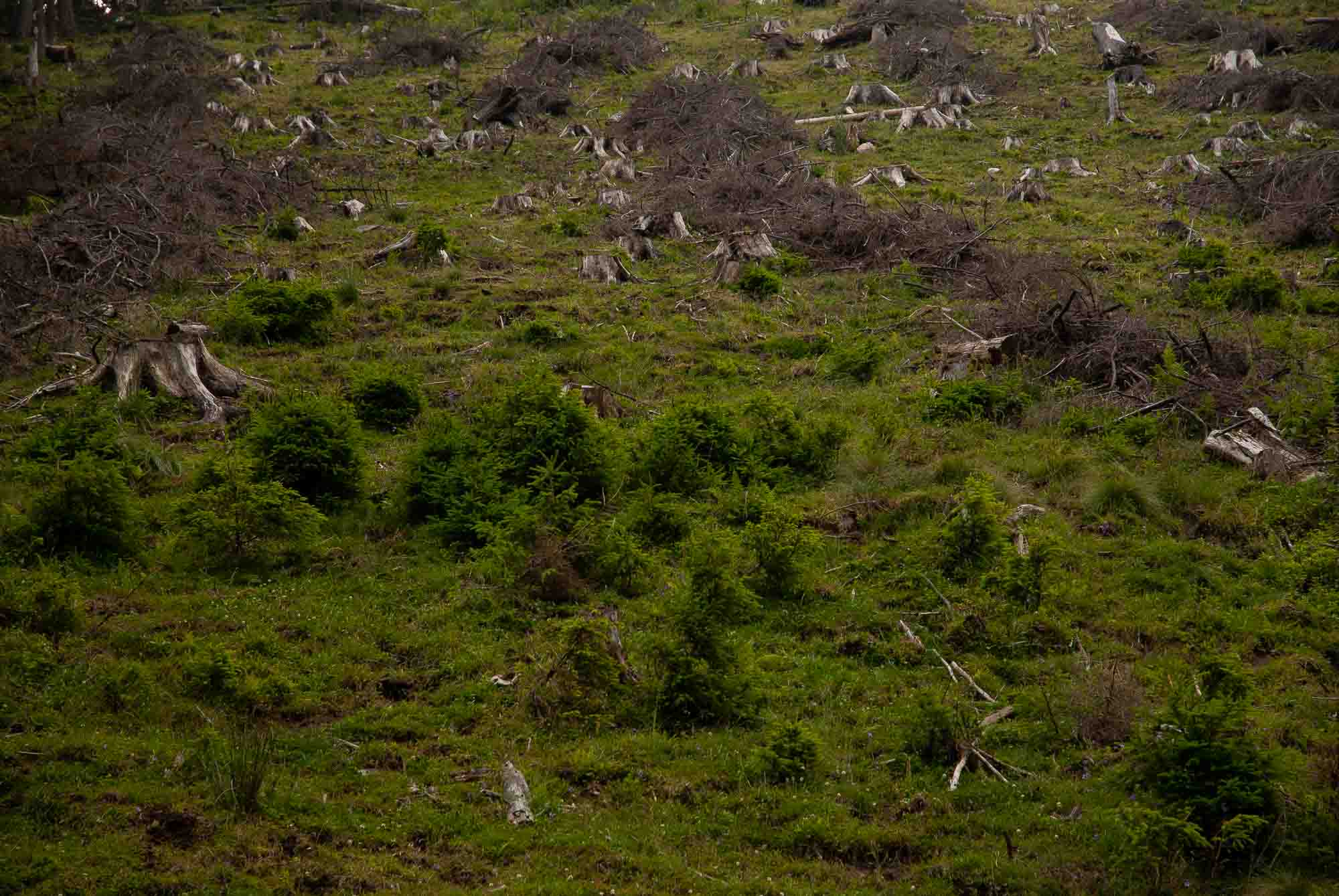
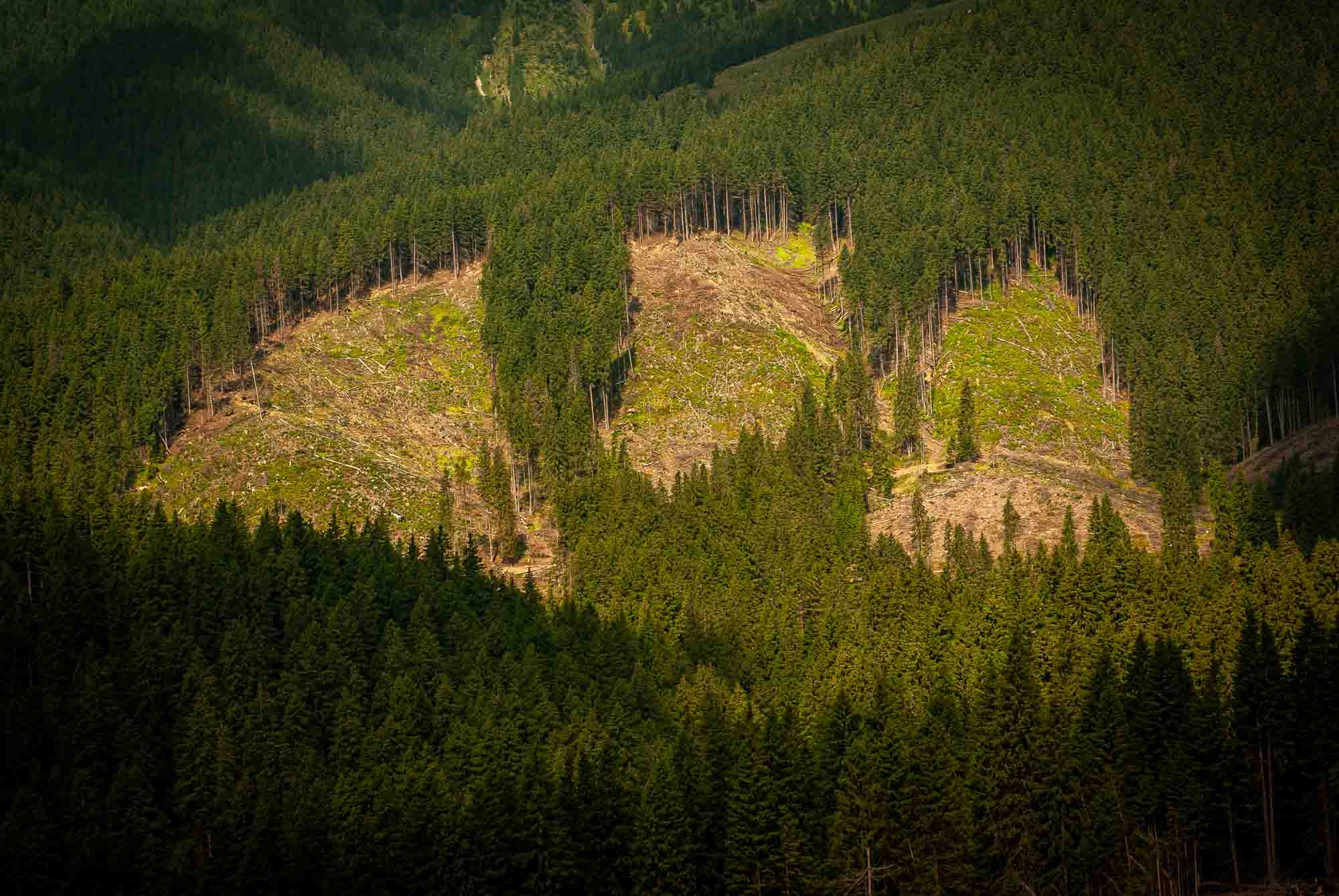
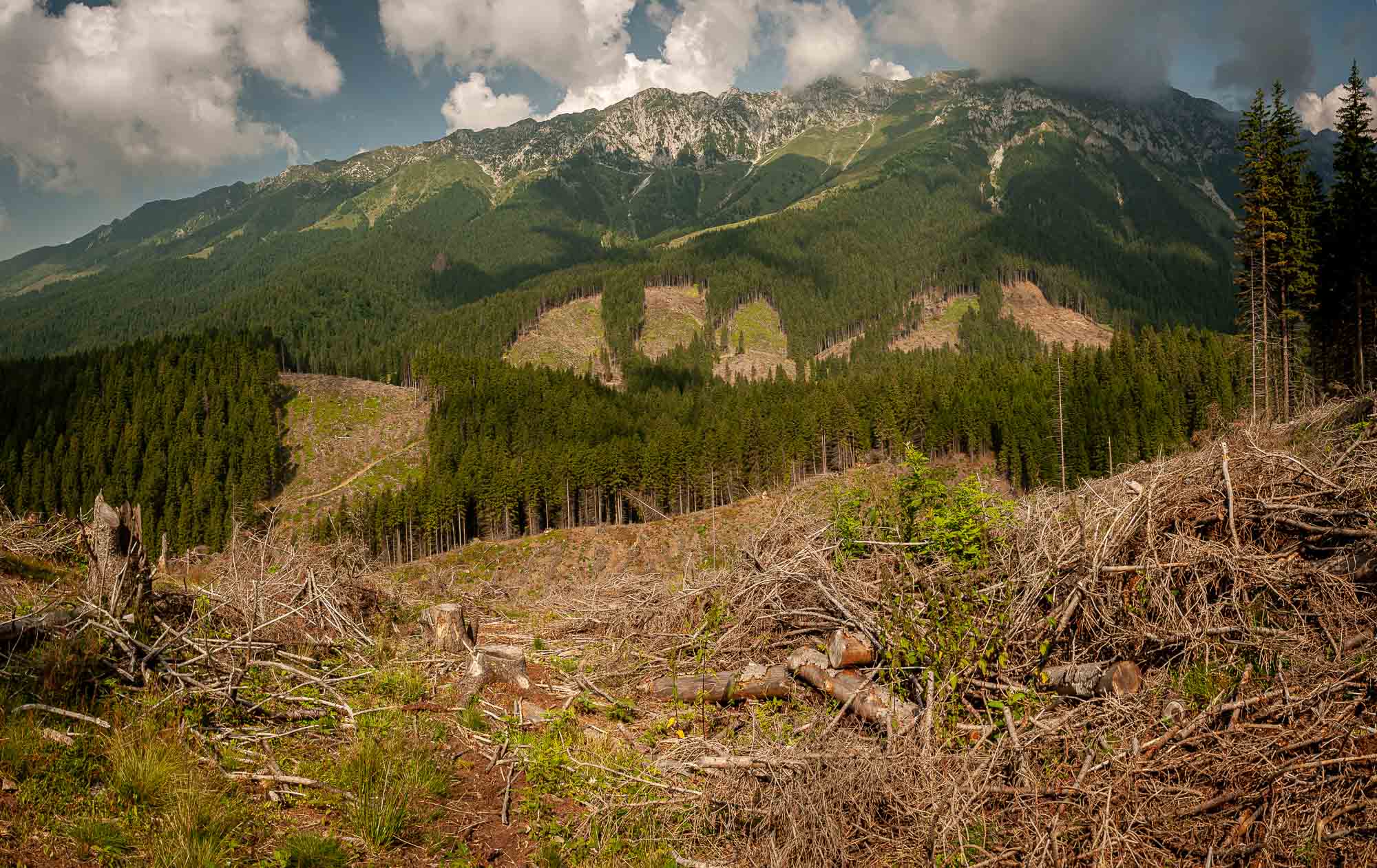

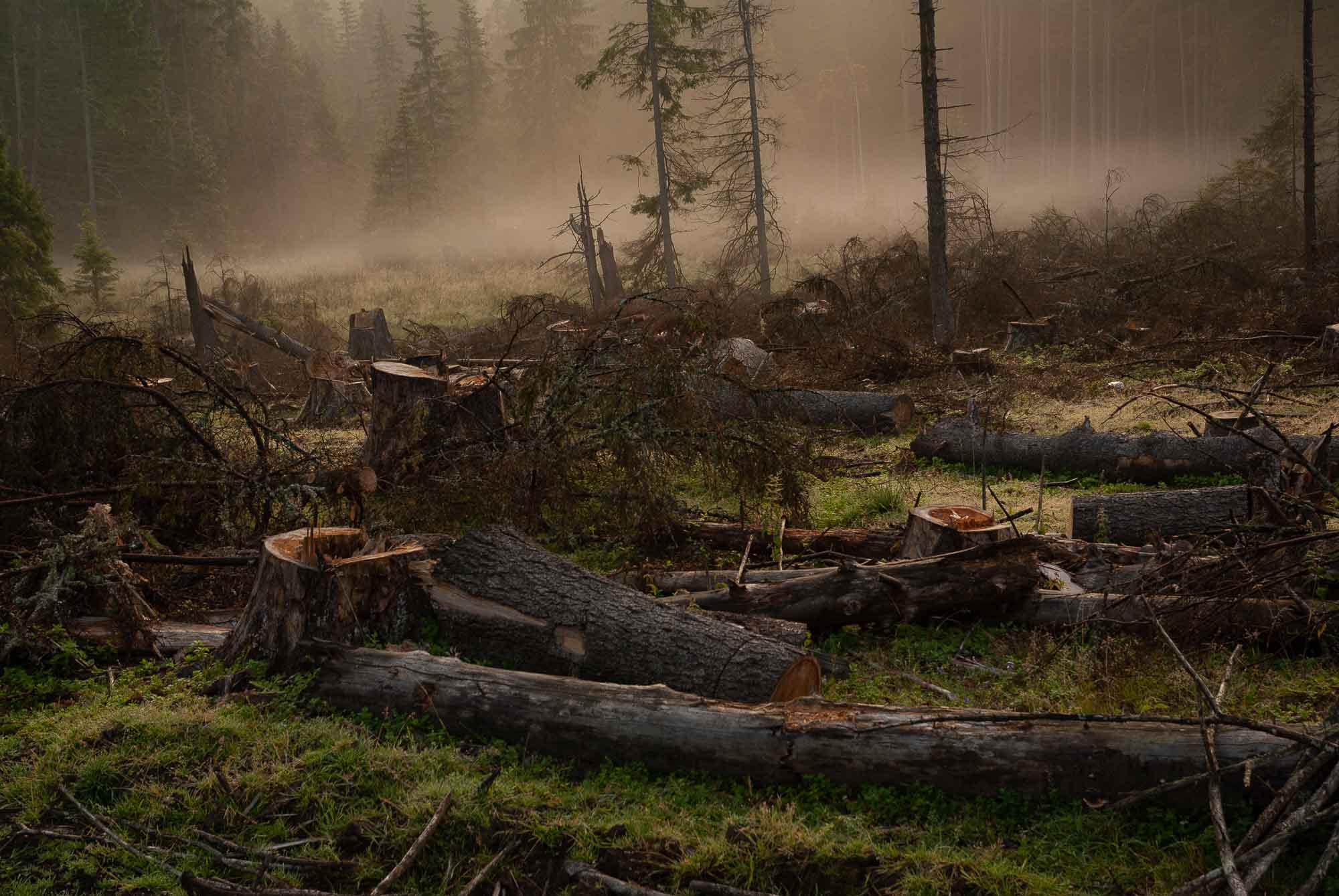


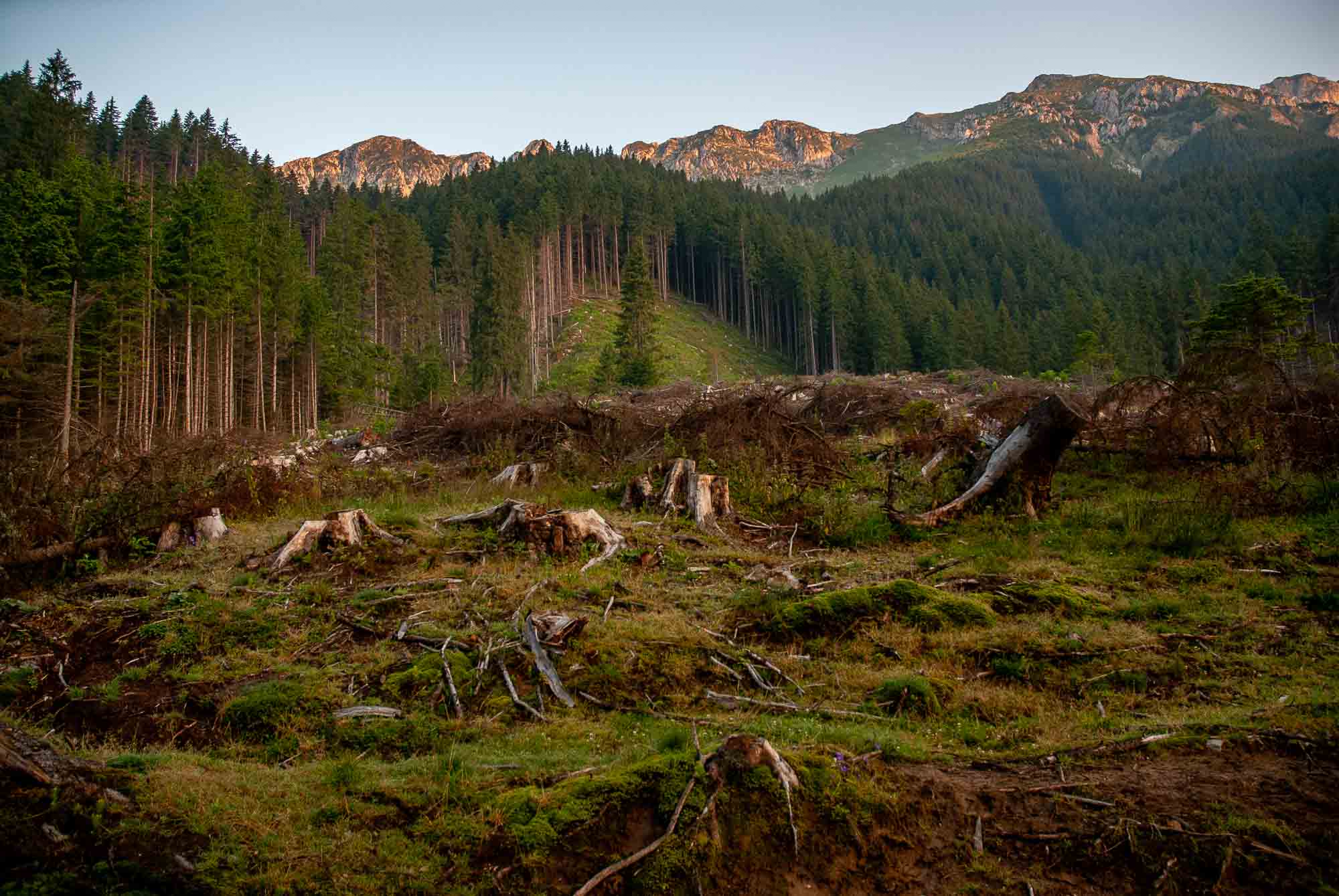
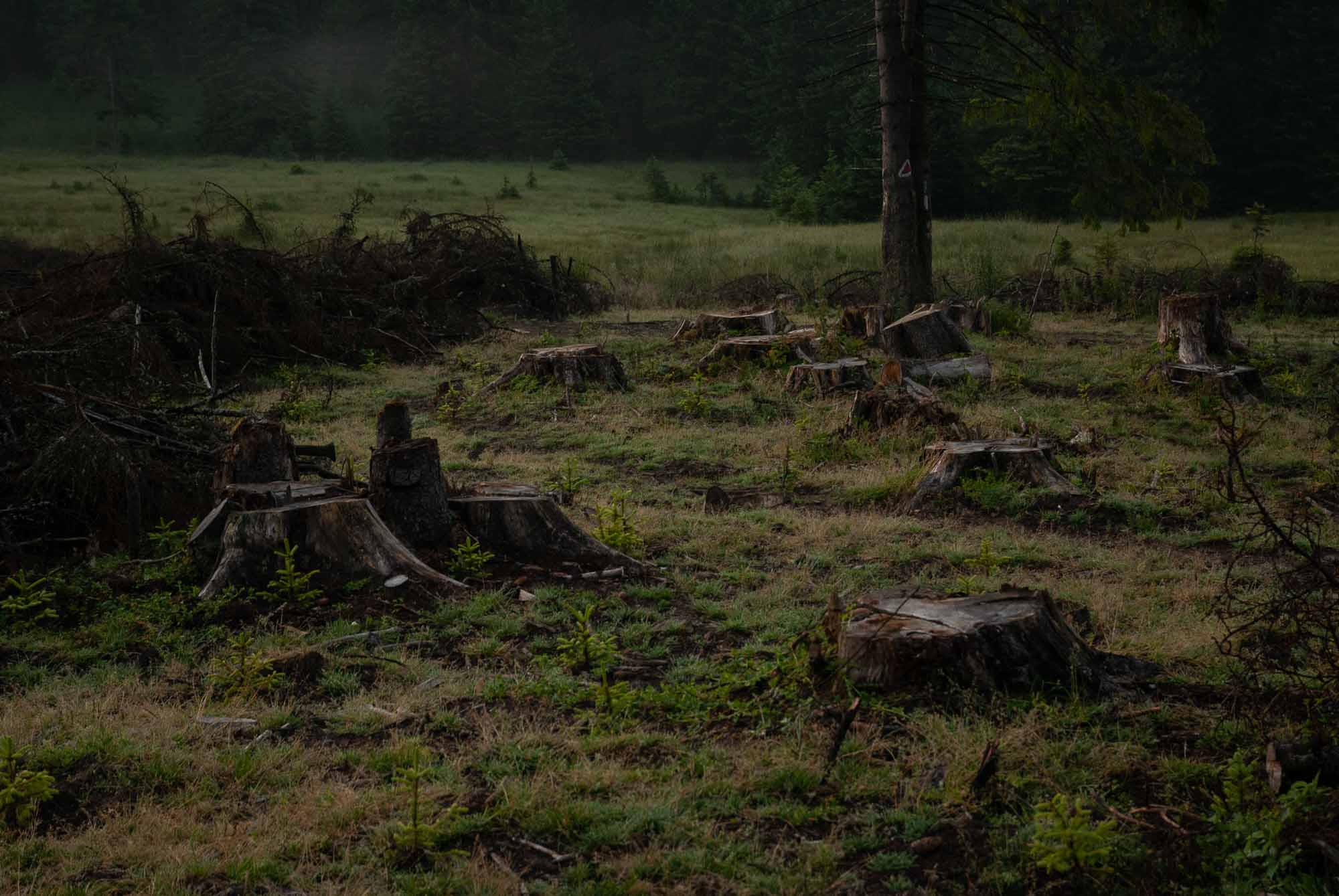

The story
Twenty million cubic metres of wood per year. A figure so high that it is difficult to get a grasp of it. A figure so high that it is difficult to understand how it can nevertheless go so unnoticed. At least outside Romania. On site, it is impossible to overlook this natural disaster. Whole mountains are shorn bare, whole valleys look as if someone had taken a bite. The satellites show frightening images. And these twenty million are only the amount that is illegally logged. In total, the country loses 38.6 million cubic metres of wood every year.
How can something like this happen? In the region, it is especially private individuals who earn their livelihood by cutting wood – in regions where this is often the only way to get an income. But they form only the visible hands of this disaster. Behind the scene, there are others pulling the strings. The most important names: IKEA, HS Timber (formerly Holzindustrie Schweighofer), Kronospan and Egger. And while IKEA will be familiar to most, the others keep themselves so hidden that it is almost impossible to get information. Strategically, this may make sense, because the accusations are serious: the irreversible destruction of Europe's last primeval forests is accompanied by corruption, bribery and assault, even murder.
History: Harvard and IKEA
In 2002, things take off. By emergency decree, Adrian Năstase, then prime minister of Romania, gives Schweighofer or now HS Timber the green light to log as much as they like and where they like over the next ten years. It is the same year that HS Timber settles in Romania.
In 2004 something astonishing happens: Harvard, the famous American university, starts buying up forest land – on a grand scale: over 33,000 hectares of Romanian forest change hands over the following years. Legally, foreign companies should not be allowed to acquire such vast amounts of land. But Harvard has made use of a fact that emerges from Romanian history.
After the revolution in 1989, laws were introduced in post-communist Romania to allow the original owners to buy back their land before the expropriations. However, this was exploited by corrupt businesspeople and politicians. Suddenly, fictitious relatives and forged documents appeared, faking claims to some of the oldest primary forests. They were bought up, only to be sold on to foreign companies one moment later. Tens of millions of dollars flowed in this process.
Some of the facilitators of these deals are now being investigated by the Romanian prosecutor's office for corruption and organised crime. Harvard eventually decided to sell the grounds – for the most part to IKEA. The contracts include various Swedish and Luxembourg companies under Harvard's control, which made the deal conspicuously complicated. IKEA owns 46,700 hectares of Romanian forest as of 2016, making it the largest private owner of forest in the country. HS Timber was also owner of forest land. Partly acquired illegally as well. In 2018, they sold all their property to the Swedish GreenGold Group.
Organised crime: HS Timber and Kronospan
As all the companies involved in this disaster keep repeating: it is not them who are actually logging the trees. It is mainly small, individual loggers, trying to earn a living. And individually, they don’t stand a chance against the international corporations, neither do small sawmills. HS Timber, Kronospan and others are taking advantage of the economically weaker situation of Romania’s people. Meanwhile, whole communities are dependent on illegal logging, because the prices are so low that many cannot live on legally logged timber alone.
Insofar as they respond to media enquiries at all, companies like HS Timber and IKEA emphasise that they have nothing to do with the logging itself, as this is carried out exclusively by subcontractors for whom they cannot or do not want to take responsibility. In reality, however, things are different. The cooperation of local contractors with the corporations cannot be overlooked. For example, loans worth several million euros are secured by contracts with HS Timber and Kronospan, and in case of doubt they help out with advances.
It would also be untrue to say that the companies were naively unaware of this disaster. On the contrary, business practices implicitly encourage illegal logging. HS Timber employs a specific bonus system for those who produce above the quotas, and even if it is officially stated that this only applies to legal timber, it is can be a motivation to fell illegally. On the way to the sawmills, legal and illegal timber is simply mixed. When loads of illegal timber finally pass the gate, HS Timber looks the other way. Illegal loggings are the base of their business model.
The corporations know no shame. Before HS Timber sold its forest holdings, they were logging non-stop, even in areas that should be protected by the so-called Natura 2000, a network of natural protection sites all across the EU. Often, these are old-growth forests, the last untouched organisms of their kind in Europe. Even national parks are clear-cut.
Kronospan is no better. Like HS Timber, it is a corporation with Austrian origin. However, the fact that the name is not publicly known says nothing about its size. Kronospan is the world's largest producer of wood panels, as found especially in IKEA furniture, one of their biggest customers.
Both IKEA and Kronospan defend themselves by saying that the plywood and wood panels are only made from sawdust and wood chips. The reality is different. Activists Thomas Waitz and Gabriel Paun report of transporters with massive tree trunks led to the factory. Some of the trees come from Natura 2000 regions, which should be under protection. Trees that are up to several hundred years old.
It is far from the case that these massive illegal cuttings went unnoticed. The scale is far too great for that. However, practices of foreign companies combined with vast sums of money pumped into the country have welded themselves into a mafia-like system over the last 20 years.
Cartels, corruption and assault
Neither is the problem unknown to the authorities. As early as 2011, 200 cubic metres of wood worth €10,000 were confiscated after a train was inspected in the Romanian Vaser valley, because the train driver could not show any documents of origin. The company that had claimed the wood, RG Holz, paid a fine of 100,000 lei, the equivalent of approximately 20,000 euros. An absurdity: After the Viseu de Sus Forestry Office had no storage space, the wood stayed with the company. A few days later it was auctioned off and RG Holz simply bought it back.
Similarly, 68 containers with 3,500 cubic metres of timber were confiscated from HS Timber in 2019, because the permits did not match the export certificates. In 2016, the Environmental Ministry sent the federal prosecution a document of 61 pages, accusing HS Timber of organised crime. Officially, the authorities didn’t commented on the report.
Irregularities in the companies' inventory are a regularity. The figures of reported timber to the official control bodies and the actual deliveries accepted do not match. According to an EU study, the origin of two-fifths of Romanian timber is unknown. A conservative estimate, other reports go as high as 50 percent. This stands opposed to the vast amount of money pumped into the Romanian State each year.
The influence of foreign companies on the Romanian economy is immense. A leaked letter to the Prime Minister of Romania speaks a clear language. Gerald Schweighofer, CEO of HS Timber, makes it clear that changes to the regulations would violate the bilateral investment treaties between Austria and Romania and threatens to take the matter to the investment court (ICSID).
It cannot be overlooked. 2021, HS Timber, Kronospan and Egger were fined by the Romanian Competition Authority for forming a cartel. The European Commission convicted the same companies for setting up a mafia system.
But it does not stop at economic crimes. The reports from opponents of the deforestation are horrific: "They tried to drag me out of the car and told me they would burn my house down and kill my family," reports Crețu Ionuț, a forester. A policeman who was questioned about the case by journalists was threatened on the phone. Mihai Dragolea, Tiberiu Bosutar and Radu Mocanu, who were making a documentary about the clearances, were beaten up by 20 men with axes and pitchforks. "They just shouted, 'I will kill you'". Among the attackers were the forestry engineer and the owner of the forest.
In October 2019, Raducu Gorcioaia was murdered in the forest district Pascani. Shortly afterwards, Liviu Pop, a forester who was investigating illegal logging in Maramures, was shot dead. In recent years, six forestry workers have been killed and more than 650 violent crimes related to logging have been recorded. They range from assault to death threats to destruction of property.
Doina Pană was Minister of Forests and Waters in 2017. She clearly opposed illegal logging and tried to change the system, when she started to feel ill. However, the doctors could not find an explanation. By January 2018, her condition was so weak that she had to resign. Then came the diagnosis: analyses showed a dangerously high amount of mercury in her body, indicating that she had been poisoned over a long period of time.
Profit versus society
While the companies make millions in profits, the population suffers. Forests where children played, that provided families with firewood, have vanished. Instead, bare patches adorn the mountains and valleys. The hungry wood-eaters will stop at nothing. National parks, old-growth forests, primary forests, Natura 2000 areas that should be under institutional protection.
Romania's forests are essential for the air quality of the country as well as the whole continent. The forests of the Carpathians are the green lungs of Europe. (36) And they can do much more than breathe. Research by scientist Paul Stammets showed that primary forests are home to a vast network of mycelium. Mycelium is the breeding ground of fungi whose genetic structure is very similar to that of humans. Further research into this material has the potential to find new ways of healing ecosystems, curing diseases from viral to mental, inventing new materials and foods. Based on Stamet's findings, even the US government recognised the protection of primary forests as a matter of national security.
Wildlife is also suffering: if deforestation continues at this rate, hundreds of species will soon lose their homes. Romanian forests are home to 30% of Europe's larger carnivores, including bears, wolves and lynx. HS Timber is already responsible for the extinction of brown bears.
Outside the forests, the companies' factories pollute nature and health. In Sebeș, Kronospan produces formaldehyde as an adhesive for plywood. Every year, 30,000 tonnes of the carcinogenic substance are produced and this without having researched the effects on the environment in any way. Although Romania had to answer for this before the European Court of Justice, Kronospan announced in 2020 that it would double the production of formaldehyde in Sebeș. Even then, cancer rates in the city were higher than the regional average.
A few cents in the donation pot
What are the companies’ reactions? Cutting back on their operations for the benefit of the environment does not seem to be an option. Quite the opposite: HS Timber is even increasing its capacities. A measure that also increases the supply of wood processing, which further depresses the price.
Considering the scale of the natural disaster, it is almost cynical what measures the corporations want to counteract the massive deforestation with. IKEA, HS Timber, Kronospan and Egger all run various foundations that are supposed to bring good to the world. However, most of the initiatives have nothing to do with deforestation.
For example, according to its website, the Egger Foundation paid about €233,500 for its project ideas, of which €150,000 was used to renovate the running track in Radauti. In comparison: 2021 the Egger Group generated a profit of over €250,000,000.
The Kronospan Foundation plans to plant one million trees worldwide. Of these, about 320,000 have been planted in February 2022, 24,000 of them in Romania. Compared to the... that are destroyed annually, 23,000 are merely a drop of water in a man-made desert. Moreover, it should not be forgotten that centuries-old Methuselah trees cannot simply be replaced with freshly planted seedlings. Neither in the amount of CO2 and minerals that are metabolised, nor in the ecosystem from which they have been torn from.
The Evergreen Private Foundation, which belongs to HS Timber, is even more brazen – on their website there is no information at all about the projects they claim to carry out. Only a few buzzwords join euphemistic stock photos. Whether the foundation is actually active cannot be said without doubt.
Similarly, IKEA is silent about the natural disaster in which they are directly involved. Instead, they engage in initiatives on more abstract topics, such as education, social entrepreneurship or renewable energy. These are nevertheless important areas, but they mask rather than prevent the damage for which IKEA is responsible.
A system to be exploited
Another factor that contributes to the functioning of this destructive system is the operational process. Trees that have been approved for logging by foresters are marked with a hammer. This is impossible to control afterwards, as these markings can simply be added afterwards.
There are attempts to use modern technology to improve the system, but these are one-way streets ending nowhere. An official website for Forestry Inspection by the Romanian Ministry shows how centuries-old trees are loaded onto trucks every day, even from the supposedly protected Natura 2000 regions. Pictures are uploaded by the drivers themselves, but by no means are all trucks recorded, in particular illegal transports, and photos cannot be found for every entry. The disaster is thus documented live, but apparently no consequences are likely to follow.
In 2017, HS Timber implemented a similar system – Timflow – with which the route of every transporter can be tracked via GPS. Here too, there are photos of the loads. The problems remain the same. Are all wagons really recorded? How is illegal timber prevented from being mixed with legal timber?
The Ministry of Water and Forests ultimately controls whether the specifications and limits are adhered to. Meaning the ministry controls whether the ministry controls as supposed to.
What now?
This is where we can start looking forward. Some of the most effective changes need to be implemented by the state. For example, the control of whether protected areas are protected must be carried out by an independent institute.
Forestry offices must be inspected regularly to ensure that clearing does not exceed the permitted level. For this, the number of inspectors must be radically increased.
The marking system must be digitalised to prevent subsequent fraud.
All companies that earn money from the felled timber must commit themselves not to log in protected areas. One step in this direction is to publish a map of these areas combined with their production and logging sites on their websites. These companies first and foremost include HS Timber, Kronospan, Egger and IKEA.
The government and the police must recognise the violence associated with these crimes and take it seriously. Official statements and public strategies are necessary for this.
It is also important to become aware of one's own responsibility as a consumer. Find out where the wood of your products comes from. Boycott IKEA and the other companies. Hornbach, Baumax, Bricostore and others are already known to source timber from the big corporations.
There are also some political initiatives that you can support. In this section you can find flyers that you can print out and distribute in IKEAs. Below we also list organisations that are active in this area.
Support & existing campaigns
- Saturdays for Forests (flyer action)
- Agent Green (a lot of documentation on the subject and continuously active)
- Lieferkettenatlas (translates as “Supply Chain Atlas”. The page is in German, but if put in Google Chrome, you can automatically translate the whole page. It is an incredible documentation on Kronospan and their practices around the world)
- Asociația Valori Superioare (activist group living in and documenting affected areas)
- Extinction Rebellion (global movement that helps anyone interested in starting a local campaign or strike)
- Fridays For Future (youth movement, might be handy if you plan an action)
- Together4Forests
- WWF
- Greenpeace
Few sattelite images
Shot using WayBack. This platform starts their archives in 2014, but keep in mind that Schweighofer opened their first plant in Romania in 2003! A big problem is that these cuts continue nowadays at faster rates than ever. Feel free to use WayBack yourself and if you find new cuts, let us know the coordinates and we will add the images to the gallery below. Our email is act_against [@] riseup [.] net



